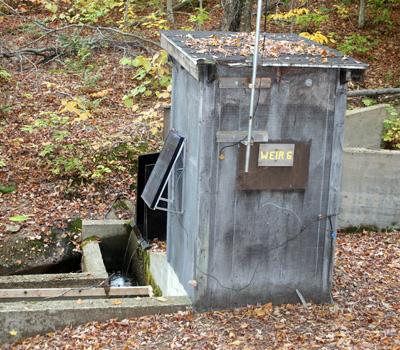Assessment of Dynamic Process-Oriented Acidification Models at Two Intensively Monitored Catchments

Despite reductions in acid emissions, computer models indicate that acid deposition remains a serious threat to the long-term health and sustainability of forests and surface waters in the northeastern United States and eastern Canada. In order to evaluate the future response of forest soils and surface waters to changing acid deposition, several dynamic soil-acidification models are being used. However, before being widely applied, the models should be evaluated so that differences between models are noted. NSRC researchers assessed four dynamic soil-acidification models using data from a long-term intensively monitored catchment at Hubbard Brook Experimental Forest in New Hampshire.
Although there were substantial quantitative differences among models, all models predicted similar patterns of changes in stream and soil chemistry for the period 1850 to 2004. The first major site disturbance was the 1919 tree harvest which was predicted to have caused the acidification of soil solution and surface waters and increased leaching of base cations from the soil. Acidification further developed as acidic deposition increased from 1950 to 1970; stream pH was lowest during the 1970s. All models predicted a slow or limited recovery of soil base saturation and stream chemistry during the 21st century.
Given their individual uncertainties, applying multiple models under impact assessment should be routine, as is increasingly the case with climate and atmospheric modeling. Results from this study are useful to researchers whose data will be passed on to policymakers, who regulate the rate of change in acid emissions.
